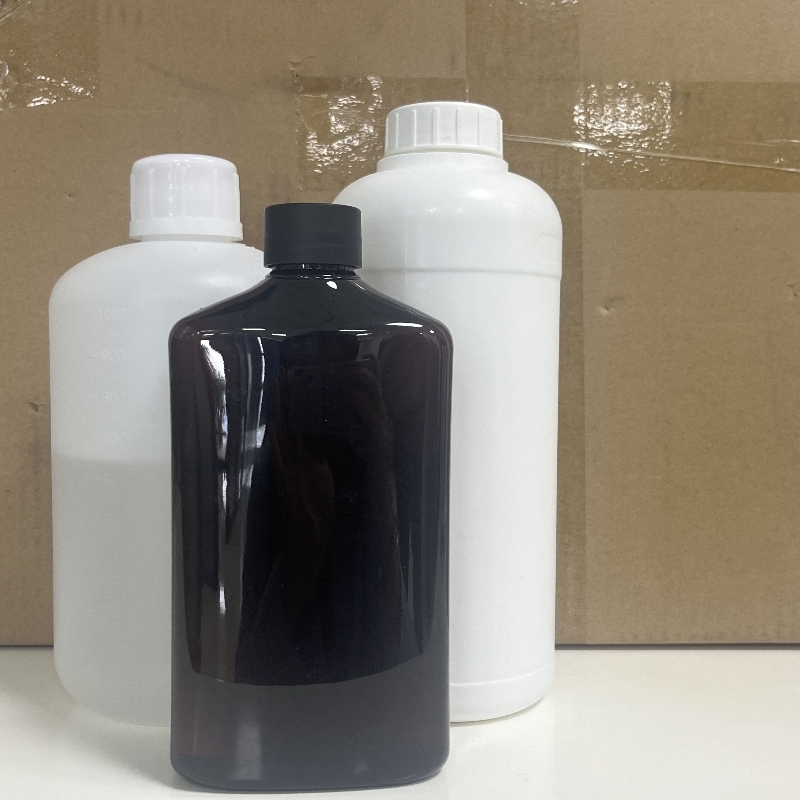-
Categories
-
Pharmaceutical Intermediates
-
Active Pharmaceutical Ingredients
-
Food Additives
- Industrial Coatings
- Agrochemicals
- Dyes and Pigments
- Surfactant
- Flavors and Fragrances
- Chemical Reagents
- Catalyst and Auxiliary
- Natural Products
- Inorganic Chemistry
-
Organic Chemistry
-
Biochemical Engineering
- Analytical Chemistry
- Cosmetic Ingredient
-
Pharmaceutical Intermediates
Promotion
ECHEMI Mall
Wholesale
Weekly Price
Exhibition
News
-
Trade Service
The "Guidelines for the Management of Comprehensive Clinical Evaluation of Drugs (Trial Version 2021)" (←click to read) issued by the National Health Commission on July 29 have attracted wide attention in the industry
.
Different from the negotiation of the national medical insurance catalogue, the adjustment of the basic medicine does not consider the direct application of the company, but is selected by clinical experts, and then reviewed and voted
At the same time, the annual negotiation of the National Medical Insurance Catalogue has also been launched
.
At present, the self-declaration of enterprises has just ended, and it is expected that nearly 200 innovative drugs will enter the scope of medical insurance reimbursement through the path of catalog adjustment this year
The drug catalog is the most directly related policy document for market access.
The game behind the formulation of the rules of the catalog, the operation of expert opinions, and the negotiation and game between the table and the table will reflect the priorities of different interest groups at the central and local levels.
The setting also depends on the bargaining chip comparison of the parties
.
After the catalog is published, the corporate marketing strategies surrounding the catalog itself and the use of administrative measures by medical insurance and related departments to encourage or restrict the use of drugs inside and outside the catalog will affect the final market structure of the drug and even the direction of industrial development
.
This article focuses on the adjustment direction and future trends of the basic medicine and medical insurance catalog
01.
Medical insurance financing is limited, and it is impossible to become the main payer of innovation
The direction of the dual adjustment of the basic medicine and the medical insurance catalogue is inseparable from China's national conditions, as well as the understanding and application of the basic logic of the medical reform
.
Thirty years ago, when the government decided to allow the market mechanism to allocate medical resources to a greater extent, the concepts of market orientation, independent operation, and self-financing permeated the health sector.
With the help of economic development, the medical market grew rapidly
.
In the 1990s, in the process of rapid medical marketization, hospitals gained greater and greater operational initiative, and their reliance on the government declined rapidly
.
The problem of "difficult and expensive medical treatment" has gradually replaced the absolute shortage of medical services and has become the main contradiction of the health system
It was not until 2005 that the State Council Development Research Center issued a report on "Basically Unsuccessful Medical Reform", which opened the curtain of comprehensive medical system reform
.
However, the proportion of government subsidies in the medical industry has not exceeded 30% for many years
.
So far, reducing the government's burden on medical services is still one of the underlying logic of medical reform
When the general environment tends to be unified resource allocation, the "basic guarantee" attribute that China's essential drugs and medical security system pay attention to, as well as the limited financing capacity of medical insurance, determine that medical insurance funds cannot become the main payer of medical innovation
.
Industrial innovation should not rely on medical insurance funds whose financing capacity is close to the limit, but needs to obtain urgently needed funds from the capital market and overseas markets
.
In the future, the medical insurance catalogue will be more inclined to play the guiding role of policy tools under a market-oriented mechanism, rather than promoting industrial upgrading through a model similar to government capital directly "betting" on new drug research and development
02.
The trend of volume-for-price exchange remains unchanged, which is beneficial to large pharmaceutical companies, and the strong will remain strong
From the perspective of drug catalog policy, drugs, as an important part of medical costs, use market capacity in exchange for a greater reduction in drug prices, and then reduce the total cost of drugs in exchange for room for medical service price reform.
This underlying logic will not be in the foreseeable future.
Will change
.
With the maturity of the drug tendering centralized procurement policy and the medical insurance access negotiation policy, centralized tendering and a more predictable process are beneficial to large pharmaceutical companies and foreign-funded enterprises to a certain extent
.
Policies based on efficient management may increase the concentration of the medical industry, and the Matthew effect of "the strong will always be strong" may further push up the proportion of drug costs in the total medical costs
03.
The basic drugs and medical insurance catalogues have reached the peak of expansion and will enter the stage of convergence
Recently, there have been frequent news of supplementing drugs in Jiangsu, Yunnan and other provinces
.
In the future, the basic medicine catalog and the medical insurance catalog will be further unified at the national level, the power to formulate the catalog will be handed over from the local to the central government, and the way for local additions to the catalog will enter history
From the perspective of development trends, as more and more innovative drugs enter the basic medicine and medical insurance catalogs, the future catalogs will enter a phase of convergence after the peak of expansion
.
Under the realistic pressure of the gradual decline in fund payment ability, medical insurance is more motivated to establish an effective drug withdrawal mechanism.
Therefore, comprehensive evaluation of drug value based on relative clinical effects under the same indications will become the authority and objectivity of maintaining catalog adjustments.
A guarantee
.
Only the medical insurer with more concentrated power has the greater ability to carry out the drug catalog withdrawal work that is more difficult than the drug transfer and the interest game is more complicated
.
04.
The general trend of more independent research groups and review experts
Chinese academic groups, foundations, and review experts currently lack the academic authority and relative independence of similar foreign institutions
.
Due to various connections with vested interest groups, research groups have formed a highly bound interest community with drug manufacturers or insurance companies in many countries.
Disciplines such as pharmacoeconomics have become the rationale for maintaining high drug pricing in some countries.
Tools for endorsement of products that lack clinical benefit
.
Therefore, how to avoid policy tools being kidnapped by interest groups requires a more open and transparent mechanism for disclosing and avoiding conflicts of interest in the interaction of all parties
.
05.
The coordination and connection of the two catalogs has become an important focus
The list of essential medicines serves as an important starting point for the pharmaceutical administration to supervise the rational use of medicines by health agencies.
Previously, medicines supplemented by various localities have become a high incidence of profit transmission and purchase and sale of corruption
.
However, the "986 policy" of basic medicine lacks the cooperation of payers at the practical level, and lacks effective incentives for doctors and hospitals to use basic medicines.
The policy effect is far less effective than the guaranteed use of "purchasing in quantity" medicines
.
The basic medicine catalog is regarded by some companies as a shortcut to quickly enter the hospital, but it is prone to the embarrassing situation of drugs entering the basic medicine catalog but not being included in the medical insurance catalog for the time being
.
From the perspective of drug application scenarios, a considerable number of vaccines, antiviral drugs (including viral hepatitis and upper respiratory tract infection drugs) with clear curative effects, and antitumor drugs for larger target populations have potential public health attributes
.
At the same time, due to the large population of patients, medical insurance funds in various regions are prone to insufficient ability to pay under the situation of different overall capacity
.
Therefore, if drugs rush to the basic drug list, it will cause the medical insurance catalog and medical insurance payment to become passive
.
In the 2012 edition of the "520" basic medicine catalog, many non-medical insurance products are gradually absorbed by the medical insurance catalog after entering the basic medicine catalog.
Among them, there are many medicines with less clear curative effects and functions
.
In the future, there is a high probability that such shortcuts will gradually tighten
.
As evidence of clinical benefit with less access to costs and disputes is more widely used in the catalog game process, the coordination and convergence of the two catalogs in the future will become an important focus of the "three-medicine linkage"
.
06.
The medical insurance review mechanism is more refined and involved in the evaluation of clinical value
From the perspective of responsibilities, the health department and the medical insurance department have considerable overlaps
.
The health and drug administration department directly determines the supervision of the marketing and use of drugs
.
With the integration of the power of the medical insurance department and the actual need for the fine management of medical insurance, medical insurance has begun to change the role of passive payment in the past to the role of active strategic purchase
.
Medical insurance needs to be involved in the judgment of the rationality of treatment
.
This is not only limited to the judgment of the relative risk-benefit ratio or cost-benefit ratio in the process of inclusion and recall of the catalog drugs themselves, but also affects the clinical rationality and safety supervision of the whole process of drug use after the drugs are sold in hospitals and pharmacies
.
From this perspective, sooner or later the government medical insurance department will establish a more refined review mechanism similar to the scope of drug underwriting by commercial insurance institutions
.
For example, you must use traditional medicines before using new special medicines, and reduce the reimbursement rate or even stop reimbursement when the effect of the medicine is not obvious
.
To a certain extent, this is in sharp contrast to the supervision of medical services that the health sector does not consider economics
.
Summarize
The double adjustment of the basic medicine and the medical insurance catalogues, due to the inconsistency of the fundamental starting point of the health department and the payer, may lead to variables in the specific details
.
However, the general direction of the dual-directory dislocation linkage has been basically clear
.
With the gradual recovery of administrative power from the local government to the central government, a more powerful government "visible hand" combined with a flexible market mechanism, coupled with a more proactive approach to the evaluation of medical service quality and relative clinical effects, with strong medical insurance, Waiting for enterprises will be more cruel stock competition
.
In the hospital market, who can quickly abandon the previous sales strategy of "channel is king" and switch to "clinical value and academic promotion", who can hope to gain an advantage over competitors in the market
.







